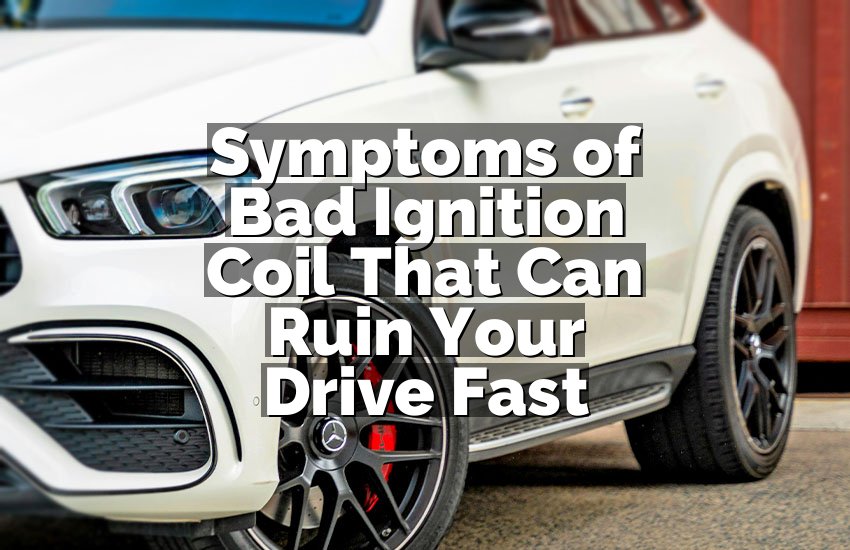You’re ready to go, hop into your Chevy Cruze, turn the key, and… nothing. That annoying blinking key light is mocking you, and your car refuses to start. Frustrating, right? In this article, we’re going to tackle the Chevy Cruze anti-theft system reset in a way that’s simple, practical, and actually works.
First, turn your key to the “On” position without starting the engine, and wait about ten minutes for the security light to go out. Make sure all doors are closed. If it doesn’t work, try locking and unlocking the car with your key fob or disconnect the battery for 15 minutes. Always keep the correct key nearby.
Understanding the Chevy Cruze Anti-Theft System
The anti-theft system in your Chevy Cruze is designed to protect your car from being stolen. It communicates with your key to ensure only an authorized key can start the engine. When the system senses a problem—like a weak key fob signal or a battery issue—the security light starts flashing, and your car won’t start.
Even if you’re using the correct key, the system can sometimes lock you out due to glitches. Low battery power, disconnections, or electrical hiccups can trigger it. Understanding this can take a lot of stress out of the situation because you’ll know it’s not broken—it’s just being cautious.
The system works by sending a coded signal between the key and your car’s computer. If the code isn’t recognized, the ignition is disabled temporarily. It may feel annoying, but patience is key. Most people can fix the problem within a few minutes once they know the right approach.
- Anti-theft prevents unauthorized ignition
- Blinking light shows activation
- Key fob battery issues often trigger it
- Knowing the system helps reduce panic
Preparing Your Chevy Cruze for Reset
Before you dive in, a little preparation makes the reset easier. Make sure the car is in park and the parking brake is on. Check your key fob battery—weak batteries are a common cause of problems. Close all doors, including the trunk, because open doors can interfere with the reset process. These small steps save time and frustration.
It’s also important to ensure your car battery has enough charge. A weak battery can make the anti-theft system act up. Turn off everything inside the car, including lights, the radio, and AC, so the system can reset without interruptions. Having a quiet, fully powered car gives the system a clean environment.
Finally, make sure you’re using a key programmed for your Cruze. Extra keys nearby can confuse the system. Taking a few minutes to prepare properly makes the reset process smooth and usually prevents repeated failed attempts.
- Car in park and parking brake on
- Replace weak key fob batteries
- Close all doors and trunk
- Ensure battery is fully charged
- Use the correct key
Performing the Basic Reset Using the Ignition
The easiest way to reset the anti-theft system is using your ignition key. Insert the key and turn it to the “On” position without starting the engine. The security light will blink—don’t panic, that’s normal. Leave the key in this position for about ten minutes. When the light goes off, it means the system has recognized your key.
Turn the ignition off and try starting the car. If it doesn’t start right away, repeat the process. Most people succeed on the second attempt. The trick is to be patient and not rush the timing. The system needs a steady signal from your key to complete the reset.
This method solves most common issues caused by miscommunication between the key and the ignition. It’s simple, doesn’t require tools, and avoids unnecessary battery disconnections. Using this approach often prevents future headaches with minor anti-theft triggers.
- Turn key to “On” without starting
- Wait ~10 minutes until light goes off
- Turn ignition off and try starting
- Repeat if needed
Using the Key Fob to Reset the System
Your key fob can help reset the system too. Stand near your car, press the unlock button once, and wait a few seconds. Then turn the ignition on while keeping the fob close to the ignition or steering column. Some Cruze models need this extra step for the system to recognize the authorized key.
If your car still won’t start, lock the doors with the fob, wait a minute, then unlock and try again. This helps the system receive a fresh signal confirming your key is authorized. Always make sure your fob battery is strong—it’s amazing how often a weak battery causes problems.
The key fob method is convenient, avoids touching the battery, and can fix stubborn lockouts. Patience is key here too, as rushing may confuse the system. Most owners get results within a few minutes using this method.
- Press unlock on fob near car
- Turn ignition on while holding fob close
- Lock and unlock doors if needed
- Make sure key fob battery is strong
Disconnecting and Reconnecting the Battery
If nothing else works, a battery reset usually does the trick. Turn off all electronics and open the hood. Disconnect the negative terminal first, then the positive. Wait at least 15 minutes to let the car’s computer fully reset. The anti-theft system will clear stored errors during this time.
Reconnect the battery—positive first, then negative. Close the hood, hop inside, insert the key, and start the car. This method works well for stubborn anti-theft issues and gives your car a clean slate. You may even notice the key fob works more smoothly afterward.
Always ensure all electronics are off during reconnection. Sudden electrical load may interfere with the reset. Following this carefully ensures success without triggering a new anti-theft lock. Most owners find this method very reliable.
- Turn off electronics and open hood
- Disconnect negative, then positive terminal
- Wait 15 minutes
- Reconnect positive, then negative and start
Checking for Persistent System Issues
If your Cruze still won’t start, it’s time to dig deeper. Persistent problems can come from worn keys, ignition cylinders, or wiring issues. Check your key for damage or worn chips, and inspect the ignition cylinder for wear. Mechanical issues can block the signal and trigger the anti-theft system.
Wiring problems like loose connections or corrosion around the ignition can also cause repeated activation. If you’re unsure, a mechanic with diagnostic tools can help. They can read the system for errors and save you hours of trial and error.
Frequent anti-theft activation usually signals an underlying electrical problem. Fixing it early prevents repeated lockouts. Keeping keys, batteries, and ignition components in good shape is an easy habit that saves a lot of stress.
- Inspect keys for damage
- Check ignition cylinder
- Look for wiring issues
- Use diagnostic tools if necessary
Final Thoughts
Resetting your Chevy Cruze anti-theft system can feel stressful, but it doesn’t have to be. Simple ignition or key fob methods work in most cases. If needed, a battery reset usually fixes stubborn issues. Keeping keys, battery, and ignition components in good condition prevents repeated problems. With these methods, you can tackle your Cruze’s anti-theft system confidently and save yourself time, money, and frustration.
| Method | Action | Benefits | Tips |
|---|---|---|---|
| Ignition Reset | Turn key to “On” without starting engine and wait for security light to go off | Recognizes your key, clears temporary lockout | Be patient; do not start engine until light goes off |
| Key Fob Reset | Unlock car and hold fob near ignition while turning key | Confirms authorized key, resets communication between fob and car | Ensure fob battery is strong; try locking/unlocking if first attempt fails |
| Battery Reset | Disconnect negative and positive terminals, wait, then reconnect | Clears stored errors in anti-theft system | Turn off all electronics first; reconnect positive then negative |
| Inspection & Maintenance | Check keys, ignition cylinder, and wiring for wear or damage | Prevents recurring lockouts and electrical issues | Replace worn keys and fix loose wires; use professional diagnostics if needed |
Frequently Asked Questions (FAQs)
Is it normal for the security light to blink constantly?
Yes, blinking is normal when the anti-theft system is active. It usually means your key isn’t recognized or the battery is low. The light prevents your engine from starting until the system confirms the key is authorized. Using ignition or fob reset methods typically fixes this. Ignoring it won’t damage your car, but you won’t be able to start the engine until it’s reset.
Can a weak key fob battery cause anti-theft issues?
Absolutely. A weak battery reduces the fob’s signal strength, which can prevent the system from recognizing the key. This triggers the security light and engine lockout. Replacing the battery usually resolves the problem instantly. Always keep a spare battery on hand. After replacement, retry the ignition or fob reset, and your car should start normally.
Do I need to visit a dealer for every anti-theft lockout?
No, most lockouts can be solved at home. Ignition resets, fob signals, or battery disconnections fix common issues. Dealer visits are only needed for damaged keys, faulty ignition cylinders, or wiring problems. Following the proper reset steps can save money and frustration, so dealer visits are rarely necessary.
Is it safe to disconnect the battery for a reset?
Yes, if done carefully. Disconnect negative first, then positive, wait at least 15 minutes, then reconnect positive first, then negative. Avoid touching other components. This method resets the anti-theft system safely and reliably for most stubborn issues.
Can multiple keys cause the system to stay locked?
Yes, having extra keys nearby can confuse the system during a reset. Only use the key you intend to reset with. Once the reset is complete, all programmed keys should work normally. Keeping spares away during reset prevents repeated failed attempts.
Do I need a fully charged battery for the reset to work?
Yes, a weak battery can prevent the system from recognizing the key. Make sure the battery is fully charged before attempting any reset. Full power ensures faster and more reliable recognition, reducing repeated attempts.
Is it necessary to keep all doors closed during reset?
Yes, doors and trunk must be closed. Open doors can interrupt the system’s recognition process. Closing everything ensures the reset completes successfully without confusion or repeated attempts.
Can repeated failed attempts damage the anti-theft system?
No, repeated attempts usually don’t damage the system, but the car may temporarily lock you out longer. Patience is key. Following the reset steps correctly prevents prolonged lockouts and frustration.


